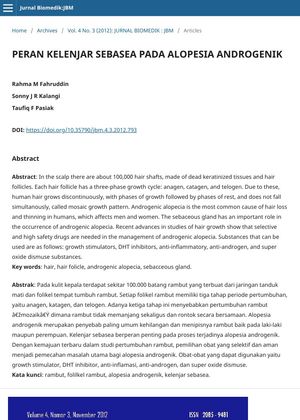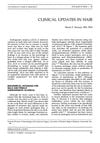Role of Sebaceous Glands in Androgenic Alopecia
February 2013
in “
Jurnal Biomedik : JBM
”

TLDR The sebaceous gland plays a significant role in hair loss and thinning, and using growth stimulators, DHT inhibitors, anti-inflammatory drugs, anti-androgens, and super oxide dismuse substances can help manage it.
The document "PERAN KELENJAR SEBASEA PADA ALOPESIA ANDROGENIK" from 2013 discussed the role of the sebaceous gland in androgenic alopecia, the most common cause of hair loss and thinning in both men and women. The authors explained that each of the approximately 100,000 hair shafts on the scalp has a three-phase growth cycle (anagen, catagen, and telogen), leading to a mosaic growth pattern where hair does not grow and fall out simultaneously. The sebaceous gland was identified as playing a significant role in the occurrence of androgenic alopecia. The authors also highlighted the need for selective and high safety drugs in managing androgenic alopecia, suggesting the use of growth stimulators, DHT inhibitors, anti-inflammatory drugs, anti-androgens, and super oxide dismuse substances.




